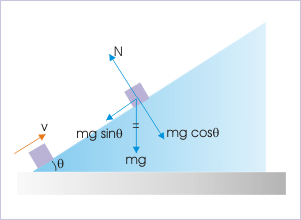| << Chapter < Page | Chapter >> Page > |
Forces differ in one important aspect. They differ in the way they transfer energy from an object. All forces are consistent and similar in their character in transferring energy "from" an object in motion. They actually differ in their ability to return the energy "to" the object, when motion is reversed. One class of force conserves energy in the form of potential energy and transfers the same when motion is reversed. Additionally, these forces return the energy to object in equal measure with respect to the energy taken from the object. This means that motion of an object interacted by conservative force(s), involving reversal of motion end up regaining its initial motion. The class of forces that conserve energy for reuse is called "conservative" forces. Similarly, the class of forces that do not conserve energy for reuse are called "non-conservative" force.
We have noticed that forces such as gravitation force, elastic force, electromagnetic forces etc conform to the requirement of energy reuse as decribed above. Hence, these forces are conservative forces.
In order to understand the perspective of conservative force, we consider a block of mass "m", which is projected up a smooth incline. Here, interactiion involves gravitational force. The force due to gravity, opposing the motion, is mg sinθ along the incline. Let us consider that the block travels a total length "L" along the incline before returning to the point of projection.
A block projected on a smooth incline plane

Work done by gravity during motion in upward direction is :
Work done by gravity during motion in downward direction is :
Thus, we find that :
This condition, when stated in general terms, specify whether the interacting force is conservative or not. In general, let and be the work done by the interacting force during motion and reversal of motion respectively. Then, the inetracting force is conservative force, if :
Work done along closed path is zero :
We summarize important points about the motion, which is interacted by conservative force :
It is also inferred from the discussion above that the other class of forces known as "non-conservative" force do not meet the requirement as needed for being conservative. They transfer energy "from" the object in motion just like conservative force, but they do not transfer this energy "to" the potential energy of the system to regain it during reverse motion. Instead, they transfer the energy to the system in an energy form which can not be used by the force to transfer energy back to the object in motion. Friction is one such non-conservative force.

Notification Switch
Would you like to follow the 'Physics for k-12' conversation and receive update notifications?